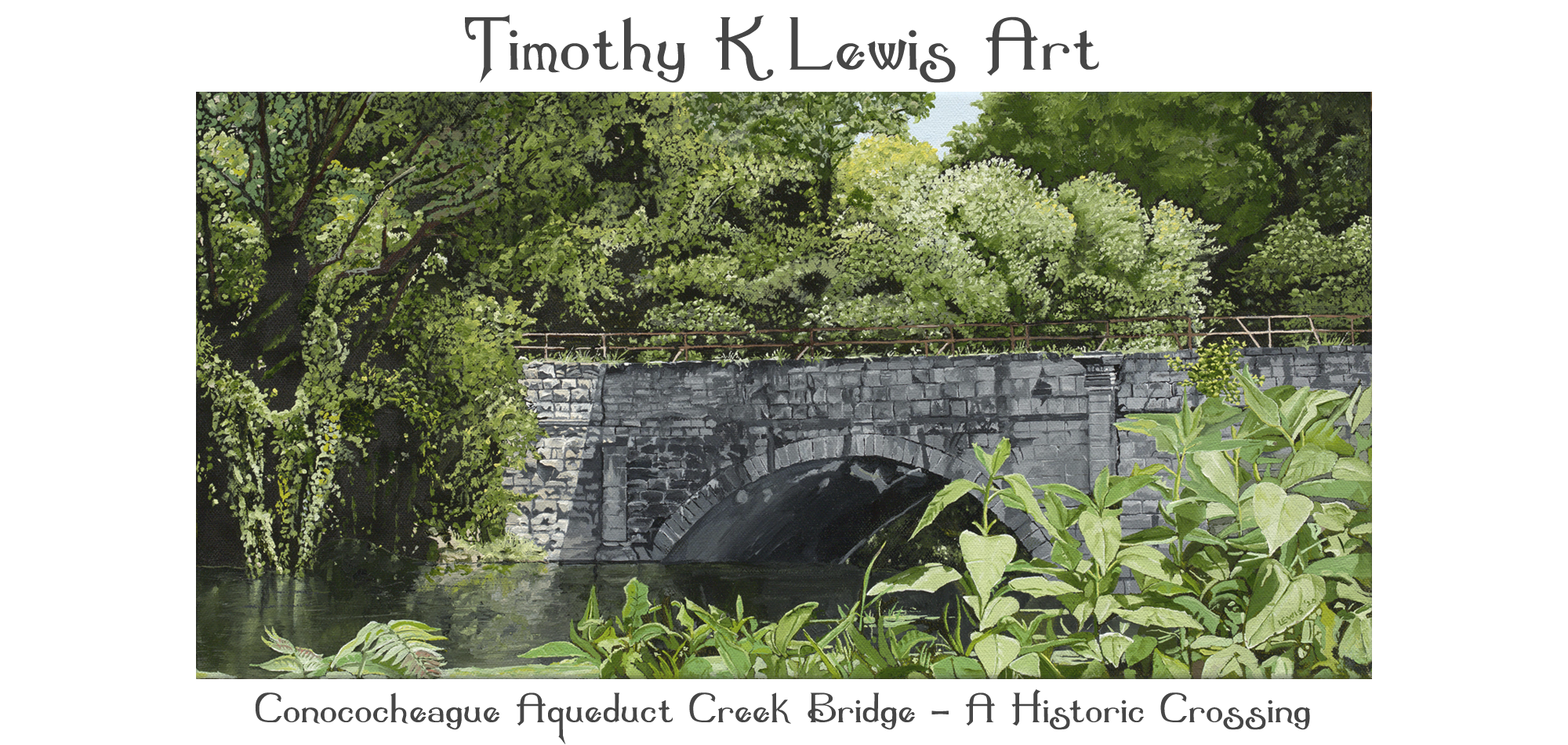
Standing at the Battle Fence – Gettysburg 150 years later by Timothy K. Lewis, 48″ x 120″ Oil on Canvas (2019)
About This Huge 4′ x 10′ Very Detailed Landscape Painting:
“Standing at the Battle Fence – Gettysburg 150 Years Later”©
The location of this painting is described to be the area where the Civil War conflict at Gettysburg commenced in the morning hours of July 1, 1863. The painting is a representation of a now peaceful and healing battlefield with new life and beauty.
Sizes and Prices:
Signed Limited Edition of 25, Archival Reproduction, Oil on Canvas
48″ x120″
Unframed: $3,750.00
Framed: $4,950.00
32″ x 72″
Unframed: $2,750.00
Framed: $3,995.00
22″ x 48″
Unframed: $2,250.00
Framed: $2,995.00
Contact us for a quote on shipping.
Symbolism in Standing at the Battle Fence – Gettysburg 150 years later


(1) A trail is located in the background on the upper middle left side of this painting which leads through the trees into a gray sky opening with two black crows flying together. This represents the dark history of the past; death, carnage, brother-against-brother, and the profound hatred during the warfare of the Gettysburg battlefield on July 1-3,1863, which left an estimated 51,000 dead.

(2) A trail is located in the background on the upper middle right side of this painting which leads through the trees into an opening sky of light with two white doves flying together.
This represents the present day of the Gettysburg battlefield. A hallowed place of peace, serenity, and healing without the conflict of man.

(3) There is a mamma crow with her three baby crows in a shaded grass cove on the upper right side of this painting. The father crow is landing down beside them for protection, as the mamma crow teaches her babies to fly. This represents a continued new life and growth in the Gettysburg battlefields.

(4) The dove descending from the heavens represents the Holy Ghost bringing peace, restoration, and healing of a now sacred ground filled with much beauty and reverence for all the lives lost.
(?) There are three additional symbols which may be found in the leaves of the trees as a dedication to a person who brought new life and love to the artist.
A Brief History Of Gettysburg
The battle of Gettysburg, Pennsylvania (July 1st-3rd, 1863) was the largest recorded military conflict in North American history.
This battle took place in the fields outside the town of Gettysburg. At around 7:30 AM on July 1st, the first shots were fired. Major General George G. Meade led the 94,000-man Union Army of the Potomac as they approached confederate forces in defense of this territory. This conflict lasted three days.
Initially, Gettysburg was occupied by two Union brigades of Brigadier General John Buford, who had settled into defensive positions west of the town. The Confederates had early success capturing Devil’s Den and the Peach Orchard.
On the third day of battle, the Union Army repulsed an attack on Cemetery Ridge by General Robert E. Lee’s Army of Northern Virginia, known as Pickett’s Charge – one of the bloodiest assaults of the Civil War.
Lee’s second invasion of the North had failed, causing his army to retreat back to Virginia. There were heavy casualties on both sides. It is estimated 51,000 soldiers died during this three-day conflict.
Absolutely heartbreaking that such a beautiful land once united could stand divided for a time and far too many precious lives lost from many family lineages of America.

Quotes from the Leaders of the North and South
As President Abraham Lincoln once said regarding the US Constitution:
“The people–the people–are the rightful masters of both congresses, and court–not to overthrow the constitution, but to overthrow the men who pervert it.”
And with his heart torn as to how to deal with the issues of his day, he said regarding the Emancipation Proclamation:
“And upon this act, sincerely believed to be an act of justice, warranted by the Constitution, upon military necessity, I invoke the considerate judgment of mankind, and the gracious favor of Almighty God.”
Robert E Lee reflected before and after the Civil War:
“With all my devotion to the Union and the feeling of loyalty and duty of an American citizen, I have not been able to make up my mind to raise my hand against my relatives, my children, my home. I have therefore resigned my commission in the Army, and save in defense of my native State, with the sincere hope that my poor services may never be needed, I hope I may never be called on to draw my sword…”
“So far from engaging in a war to perpetuate slavery, I am rejoiced that Slavery is abolished. I believe it will be greatly for the interest of the South. So fully am I satisfied of this that I would have cheerfully lost all that I have lost by the war, and have suffered all that I have suffered to have this object attained.”
